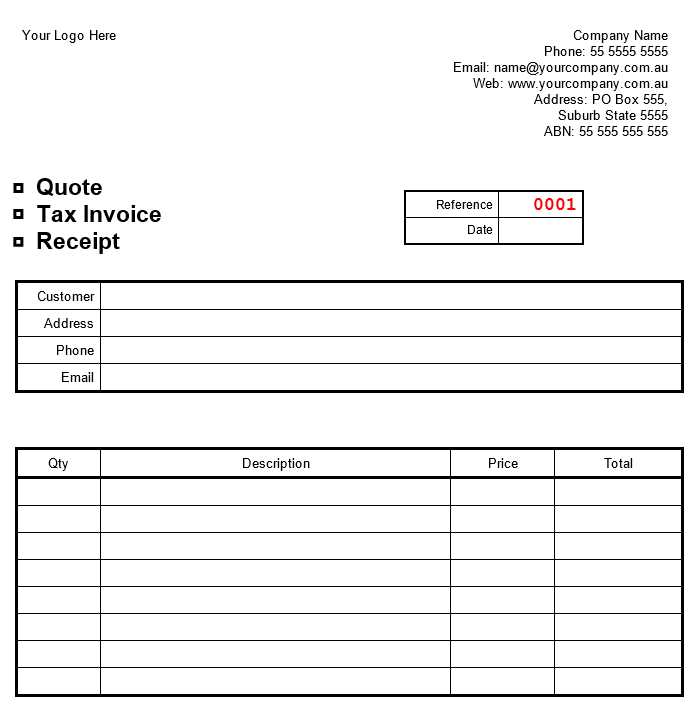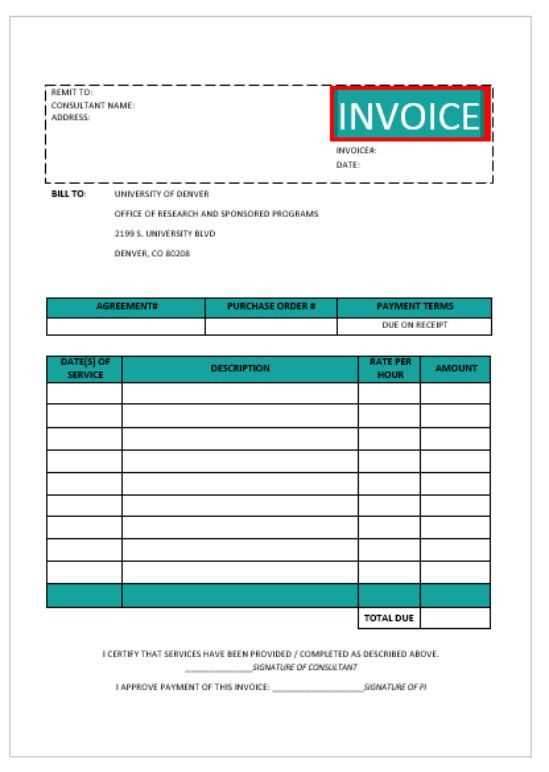
Use a structured invoice or receipt template to keep transactions clear and organized. Whether you’re a freelancer, a small business owner, or managing company finances, a well-designed template saves time and ensures all necessary details are included.
Choose between Excel, Word, PDF, and online generators to create a template that fits your needs. Excel templates allow automated calculations, Word templates provide design flexibility, and PDFs ensure a professional, uneditable format. Many online tools offer customizable templates that can be filled out and sent in minutes.
Include essential elements: business name, contact details, invoice or receipt number, date, itemized list of products or services, total amount, and payment terms. Customization options, such as adding a company logo or adjusting colors, help maintain a professional brand image.
Explore free and premium templates to find the best match. Many accounting platforms offer built-in templates with additional features like automatic tax calculations and online payment options, simplifying the billing process.
Invoice/Receipt Template

Use a structured template to ensure every invoice or receipt includes the necessary details. A well-organized document helps avoid disputes and simplifies record-keeping.
- Business Information: Include the company name, address, phone number, and email.
- Customer Details: Add the recipient’s name, address, and contact information.
- Invoice/Receipt Number: Assign a unique identifier for tracking and accounting.
- Date: Specify the issue date and, if applicable, the due date for payments.
- Itemized List: Detail products or services with descriptions, quantities, and prices.
- Taxes and Discounts: Clearly display applicable taxes, discounts, and the final amount.
- Payment Information: Include accepted payment methods and relevant bank details.
- Terms and Conditions: Outline return policies, late fees, or other relevant details.
PDF and digital formats ensure easy sharing and archiving. For automated processing, consider using a template compatible with invoicing software.
Key Differences Between Invoices and Receipts

An invoice requests payment, while a receipt confirms that payment has been made. Businesses issue invoices before receiving money, detailing the amount owed, due date, and payment methods. Receipts come after payment, serving as proof of the transaction.
Purpose and Timing
Invoices act as a billing request, often including itemized charges, tax details, and payment terms. They help track accounts receivable and manage cash flow. Receipts, on the other hand, confirm completed transactions, showing the date, total amount paid, and payment method.
Legal and Accounting Roles

Invoices support financial planning, tax reporting, and record-keeping, often required for audits or reimbursement. Receipts validate expenses for customers and businesses, serving as documentation for returns, warranties, and tax deductions.
Both documents are necessary for accurate bookkeeping, but they serve distinct roles in financial transactions.
How to Customize an Invoice Template for Your Business

Choose a template that matches your business needs. Many platforms offer pre-designed templates, but you can also create one in Excel, Word, or specialized invoicing software.
Add your business details. Include your company name, logo, address, and contact information. A branded invoice looks more professional and helps clients recognize your business instantly.
Adjust the layout to improve clarity. Organize sections logically, ensuring that invoice numbers, dates, and due amounts are easy to find. If using software, modify column widths and font sizes for better readability.
Define tax and payment terms. Specify applicable taxes, late fees, and accepted payment methods. Clear terms prevent misunderstandings and ensure smoother transactions.
Include a personalized message. A short thank-you note or payment reminder at the bottom can improve client relationships and encourage timely payments.
Test the template before sending invoices. Generate a sample invoice and review it for accuracy. Verify calculations, formatting, and alignment to avoid errors that could delay payments.
Legal Requirements for Invoices and Receipts in Different Countries

Businesses issuing invoices in the European Union must include the VAT number of both the seller and the buyer (if applicable), a sequential invoice number, and a clear breakdown of VAT rates. In Germany, invoices over €250 require the buyer’s address, while France mandates specific invoice retention periods–ten years for tax purposes.
In the United States, federal law does not dictate a standard invoice format, but sales tax regulations vary by state. California requires businesses to specify sales tax separately, whereas in New York, invoices for services over $500 must include detailed descriptions.
In the United Kingdom, VAT invoices must display the supplier’s VAT number and indicate whether VAT is included. Simplified invoices are allowed for transactions below £250, showing only the total amount and tax rate.
Australia enforces strict GST invoice rules. Tax invoices for sales over AUD 1,000 must list the buyer’s identity, the GST amount, and the supplier’s Australian Business Number (ABN).
India requires invoices to follow GST rules, including a unique invoice number, HSN or SAC codes for goods and services, and the GST registration number. Electronic invoicing is mandatory for businesses exceeding a specific turnover threshold.
Brazil enforces electronic invoicing (Nota Fiscal Eletrônica) for most transactions, integrating invoices with tax authorities in real time. Businesses must use government-approved software and include a QR code for validation.
Businesses operating internationally should verify local regulations, as failure to meet requirements can lead to fines or disputes with tax authorities.

